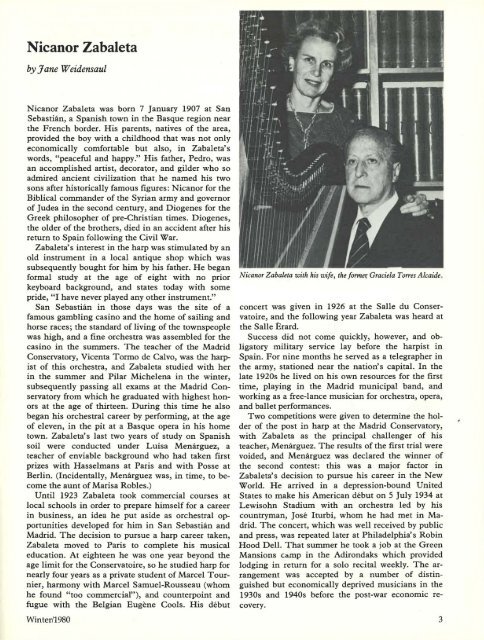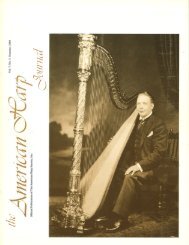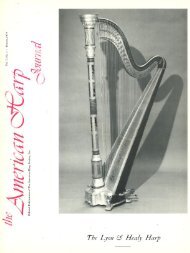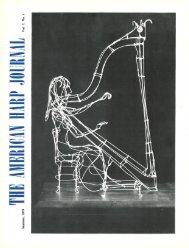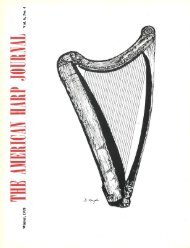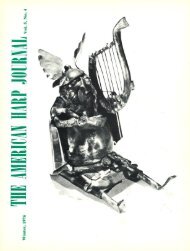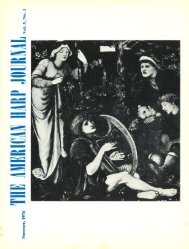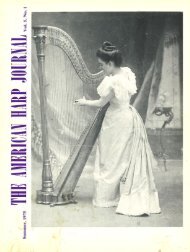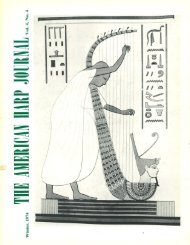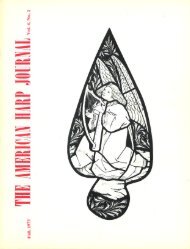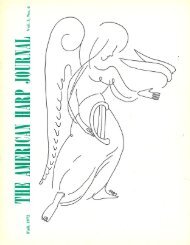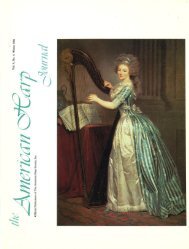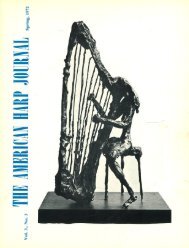You also want an ePaper? Increase the reach of your titles
YUMPU automatically turns print PDFs into web optimized ePapers that Google loves.
Nicanor Zabaleta<br />
by Jane Weidensaul<br />
Nicanor Zabaleta was born 7 January 1907 at San<br />
Sebastian, a Spanish town in the Basque region near<br />
the French border. His parents, natives of the area,<br />
provided the boy with a childhood that was not only<br />
economically comfortable but also, in Zabaleta's<br />
words, "peaceful and happy." His father, Pedro, was<br />
an accomplished artist, decorator, and gilder who so<br />
admired ancient civilization that he named his two<br />
sons after historically famous figures: Nicanor for the<br />
Biblical commander of the Syrian army and governor<br />
of Judea in the second century, and Diogenes for the<br />
Greek philosopher of pre-Christian times. Diogenes,<br />
the older of the brothers, died in an accident after his<br />
return to Spain following the Civil War.<br />
Zabaleta' s interest in the harp was stimulated by an<br />
old instrument in a local antique shop which was<br />
subsequently bought for him by his father. He began<br />
formal study at the age of eight with no prior<br />
keyboard background, and states today with some<br />
pride, "I have never played any other instrument."<br />
San Sebastian in those days was the site of a<br />
famous gambling casino and the home of sailing and<br />
horse races; the standard of living of the townspeople<br />
was high, and a fine orchestra was assembled for the<br />
casino in the summers. The teacher of the Madrid<br />
Conservatory, Vicenta Tormo de Calvo, was the harpist<br />
of this orchestra, and Zabaleta studied with her<br />
in the summer and Pilar Michelena in the winter,<br />
subsequently passing all exams at the Madrid Conservatory<br />
from which he graduated with highest honors<br />
at the age of thirteen. During this time he also<br />
began his orchestral career by performing, at the age<br />
of eleven, in the pit at a Basque opera in his home<br />
town. Zabaleta's last two years of study on Spanish<br />
soil were conducted under Luisa Menarguez, a<br />
teacher of enviable background who had taken first<br />
prizes with Hasselmans at Paris and with Posse at<br />
Berlin. (Incidentally, Menarguez was, in time, to become<br />
the aunt of Marisa Robles.)<br />
Until 1923 Zabaleta took commercial courses at<br />
local schools in order to prepare himself for a career<br />
in business, an idea he put aside as orchestral opportunities<br />
developed for him in San Sebastian and<br />
Madrid. The decision to pursue a harp career taken,<br />
Zabaleta moved to Paris to complete his musical<br />
education. At eighteen he was one year beyond the<br />
age limit for the Conservatoire, so he studied harp for<br />
nearly four years as a private student of Marcel Tournier,<br />
harmony with Marcel Samuel-Rousseau (whom<br />
he found "too commercial"), and counterpoint and<br />
fugue with the Belgian Eugene Cools. His debut<br />
<strong>Winter</strong>/<strong>1980</strong><br />
Nicanor Zabaleta with his wife, the former, Graciela Torres Alcaide.<br />
concert was given in 1926 at the Salle du Conservatoire,<br />
and the following year Zabaleta was heard at<br />
the Salle Erard.<br />
Success did not come quickly, however, and obligatory<br />
military service lay before the harpist in<br />
Spain. For nine months he served as a telegrapher in<br />
the army, stationed near the nation's capital. In the<br />
late 1920s he lived on his own resources for the first<br />
time, playing in the Madrid municipal band, and<br />
working as a free-lance musician for orchestra, opera,<br />
and ballet performances.<br />
Two competitions were given to determine the holder<br />
of the post in harp at the Madrid Conservatory,<br />
with Zabaleta as the principal challenger of his<br />
teacher, Menarguez. The results of the first trial were<br />
voided, and Menarguez was declared the winner of<br />
the second contest: this was a major factor in<br />
Zabaleta's decision to pursue his career in the New<br />
World. He arrived in a depression-bound United<br />
States to make his American debut on 5 July 1934 at<br />
Lewisohn Stadium with an orchestra led by his<br />
countryman, Jose lturbi, whom he had met in Madrid.<br />
The concert, which was well received by public<br />
and press, was repeated later at Philadelphia's Robin<br />
Hood Dell. That summer he took a job at the Green<br />
Mansions camp in the Adirondaks which provided<br />
lodging in return for a solo recital weekly. The arrangement<br />
was accepted by a number of distinguished<br />
but economically deprived musicians in the<br />
1930s and 1940s before the post-war economic recovery.<br />
3


